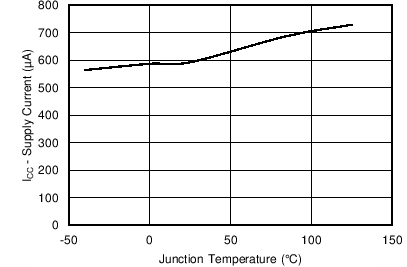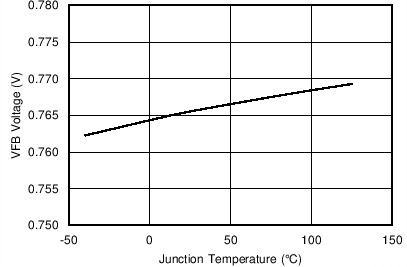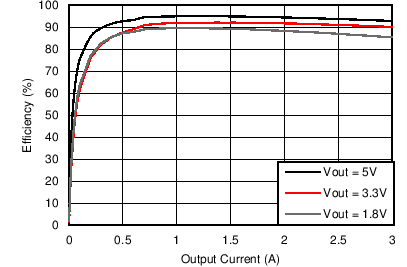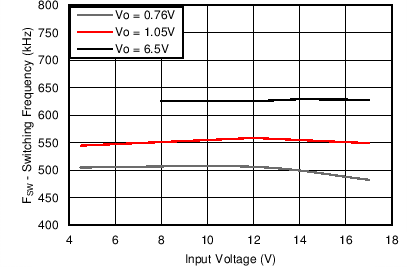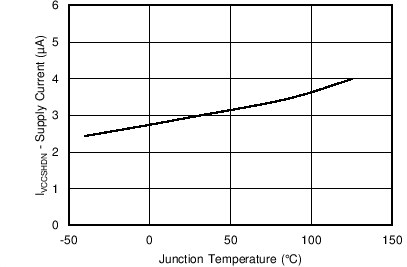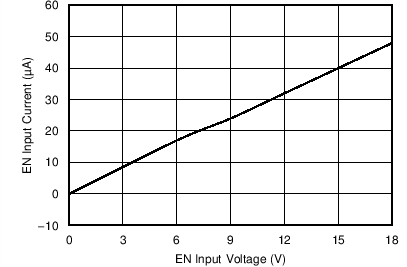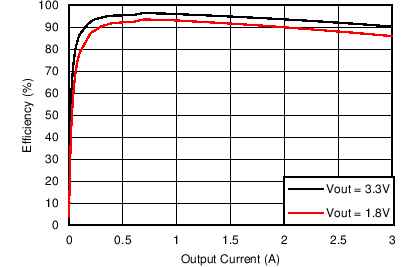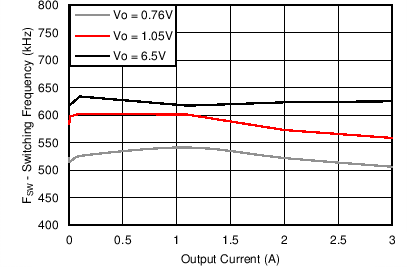SLVSDT2 November 2016 TPS562219A , TPS563219A
PRODUCTION DATA.
- 1 Features
- 2 Applications
- 3 Description
- 4 Revision History
- 5 Pin Configuration and Functions
- 6 Specifications
- 7 Detailed Description
- 8 Application and Implementation
- 9 Power Supply Recommendations
- 10Layout
- 11Device and Documentation Support
- 12Mechanical, Packaging, and Orderable Information
Package Options
Mechanical Data (Package|Pins)
- DDF|8
Thermal pad, mechanical data (Package|Pins)
Orderable Information
6 Specifications
6.1 Absolute Maximum Ratings
TJ = -40°C to 150°C (unless otherwise noted) (1)| MIN | MAX | UNIT | ||
|---|---|---|---|---|
| Input voltage range | VIN, EN | –0.3 | 19 | V |
| VBST | –0.3 | 25 | V | |
| VBST (10 ns transient) | –0.3 | 27.5 | V | |
| VBST (vs SW) | –0.3 | 6.5 | V | |
| VFB, PG | –0.3 | 6.5 | V | |
| SS | –0.3 | 5.5 | V | |
| SW | –2 | 19 | V | |
| SW (10 ns transient) | –3.5 | 21 | V | |
| Operating junction temperature, TJ | –40 | 150 | °C | |
| Storage temperature, Tstg | –55 | 150 | °C | |
(1) Stresses beyond those listed under Absolute Maximum Ratings may cause permanent damage to the device. These are stress ratings only, which do not imply functional operation of the device at these or any other conditions beyond those indicated under Recommended Operating Conditions. Exposure to absolute-maximum-rated conditions for extended periods may affect device reliability.
6.2 ESD Ratings
| VALUE | UNIT | |||
|---|---|---|---|---|
| V(ESD) | Electrostatic discharge | Human body model (HBM), per ANSI/ESDA/JEDEC JS-001(1) | ±2000 | V |
| Charged device model (CDM), per JEDEC specification JESD22-C101(2) | ±500 | |||
(1) JEDEC document JEP155 states that 500-V HBM allows safe manufacturing with a standard ESD control process.
(2) JEDEC document JEP157 states that 250-V CDM allows safe manufacturing with a standard ESD control process.
6.3 Recommended Operating Conditions
TJ = –40°C to 150°C (unless otherwise noted)| MIN | MAX | UNIT | |||
|---|---|---|---|---|---|
| VIN | Supply input voltage range | 4.5 | 17 | V | |
| VI | Input voltage range | VBST | –0.1 | 23 | V |
| VBST (10 ns transient) | –0.1 | 26 | |||
| VBST(vs SW) | –0.1 | 6 | |||
| EN | –0.1 | 17 | |||
| VFB, PG | –0.1 | 5.5 | |||
| SS | –0.1 | 5 | |||
| SW | –1.8 | 17 | |||
| SW (10 ns transient) | –3.5 | 20 | |||
| TA | Operating free-air temperature | –40 | 85 | °C | |
6.4 Thermal Information
| THERMAL METRIC(1) | TPS562219A | TPS563219A | UNIT | |
|---|---|---|---|---|
| DDF (SOT) | ||||
| 8 PINS | ||||
| RθJA | Junction-to-ambient thermal resistance | 106.1 | 87.0 | °C/W |
| RθJC(top) | Junction-to-case (top) thermal resistance | 49.1 | 41.6 | °C/W |
| RθJB | Junction-to-board thermal resistance | 10.9 | 14.6 | °C/W |
| ψJT | Junction-to-top characterization parameter | 8.6 | 4.7 | °C/W |
| ψJB | Junction-to-board characterization parameter | 10.8 | 14.6 | °C/W |
(1) For more information about traditional and new thermal metrics, see the Semiconductor and IC Package Thermal Metrics application report.
6.5 Electrical Characteristics
TJ = –40°C to 150°C, VIN = 12 V (unless otherwise noted)| PARAMETER | TEST CONDITIONS | MIN | TYP | MAX | UNIT | |
|---|---|---|---|---|---|---|
| SUPPLY CURRENT | ||||||
| IVIN | Operating – non-switching supply current | VIN current, TA = 25°C, EN = 5 V, VFB = 0.8 V | 650 | 900 | µA | |
| IVINSDN | Shutdown supply current | VIN current, TA = 25°C, EN = 0 V | 3 | 10 | µA | |
| LOGIC THRESHOLD | ||||||
| VENH | EN high-level input voltage | EN | 1.6 | V | ||
| VENL | EN low-level input voltage | EN | 0.6 | V | ||
| REN | EN pin resistance to GND | VEN = 12 V | 225 | 450 | 900 | kΩ |
| VFB VOLTAGE AND DISCHARGE RESISTANCE | ||||||
| VFBTH | VFB threshold voltage | TA = 25°C, VO = 1.05 V | 757 | 765 | 773 | mV |
| TA = 0°C to 85°C, VO = 1.05 V(1) | 753 | 777 | ||||
| TA = -40°C to 85°C, VO = 1.05 V(1) | 751 | 779 | ||||
| IVFB | VFB input current | VFB = 0.8V, TA = 25°C | 0 | ±0.1 | µA | |
| MOSFET | ||||||
| RDS(on)h | High side switch resistance | TA = 25°C, VBST – SW = 5.5 V, TPS562219A | 133 | mΩ | ||
| TA = 25°C, VBST – SW = 5.5 V, TPS563219A | 68 | |||||
| RDS(on)l | Low side switch resistance | TA = 25°C, TPS562219A | 80 | mΩ | ||
| TA = 25°C, TPS563219A | 39 | |||||
| CURRENT LIMIT | ||||||
| IOCL | Current limit(1) | DC current, VOUT = 1.05 V, L1 = 2.2 µH, TPS562219A | 2.5 | 3.2 | 4.3 | A |
| DC current, VOUT = 1.05 V, L1 = 1.5 µH, TPS563219A | 3.5 | 4.2 | 5.3 | |||
| THERMAL SHUTDOWN | ||||||
| TSDN | Thermal shutdown threshold(1) | Shutdown temperature | 155 | °C | ||
| Hysteresis | 35 | |||||
| SOFT START | ||||||
| ISS | SS charge current | VSS = 1.2 V | 4.2 | 6 | 7.8 | µA |
| POWER GOOD | ||||||
| VTHPG | PG threshold | VFB rising (Good) | 85% | 90% | 95% | |
| VFB falling (Fault) | 85% | |||||
| IPG | PG sink current | PG = 0.5 V | 0.5 | 1 | mA | |
| OUTPUT UNDERVOLTAGE AND OVERVOLTAGE PROTECTION | ||||||
| VOVP | Output OVP threshold | OVP Detect | 125%xVfbth | |||
| VUVP | Output UVP threshold | Hiccup detect | 65%xVfbth | |||
| tHiccupOn | Hiccup Power On Time | 1 | cycle | |||
| tHiccupOff | Hiccup Power Off Time | 7 | ||||
| UVLO | ||||||
| UVLO | UVLO threshold | Wake up VIN voltage | 3.45 | 3.75 | 4.05 | V |
| Hysteresis VIN voltage | 0.13 | 0.32 | 0.55 | |||
(1) Not production tested.
6.6 Timing Requirements
| MIN | TYP | MAX | UNIT | |||
|---|---|---|---|---|---|---|
| ON-TIME TIMER CONTROL | ||||||
| tON | On time | VIN = 12 V, VO = 1.05 V | 150 | ns | ||
| tOFF(MIN) | Minimum off time | TA = 25°C, VFB = 0.5 V | 260 | 310 | ns | |
6.7 Typical Characteristics
6.7.1 TPS562219A Characteristics
VIN = 12V (unless otherwise noted)
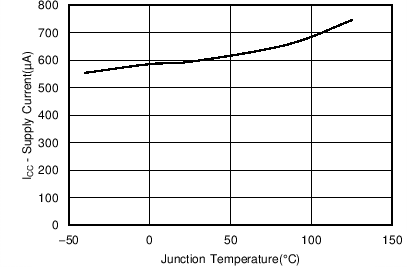
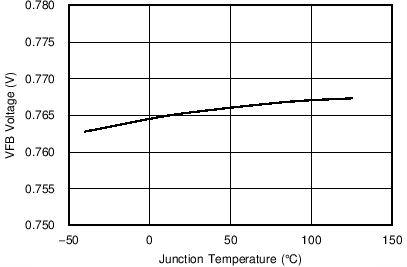
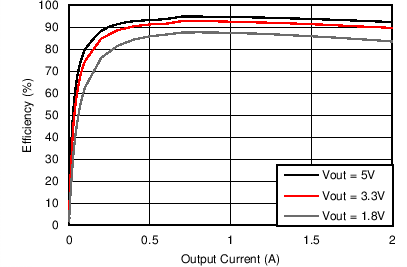
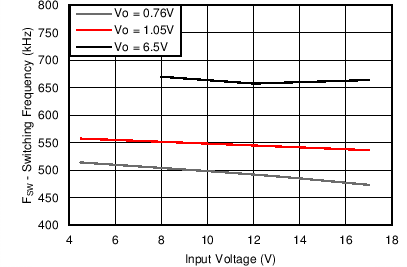
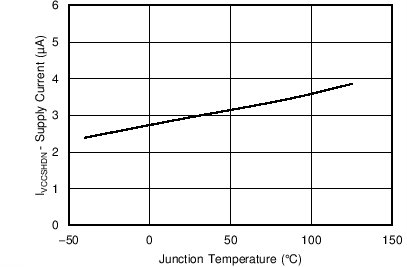
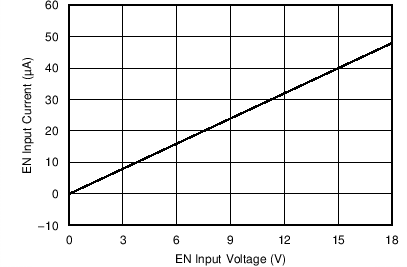
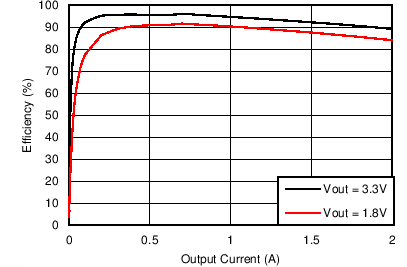
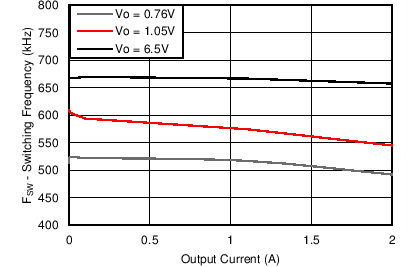
6.7.2 TPS563219A Characteristics
